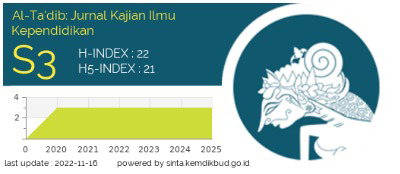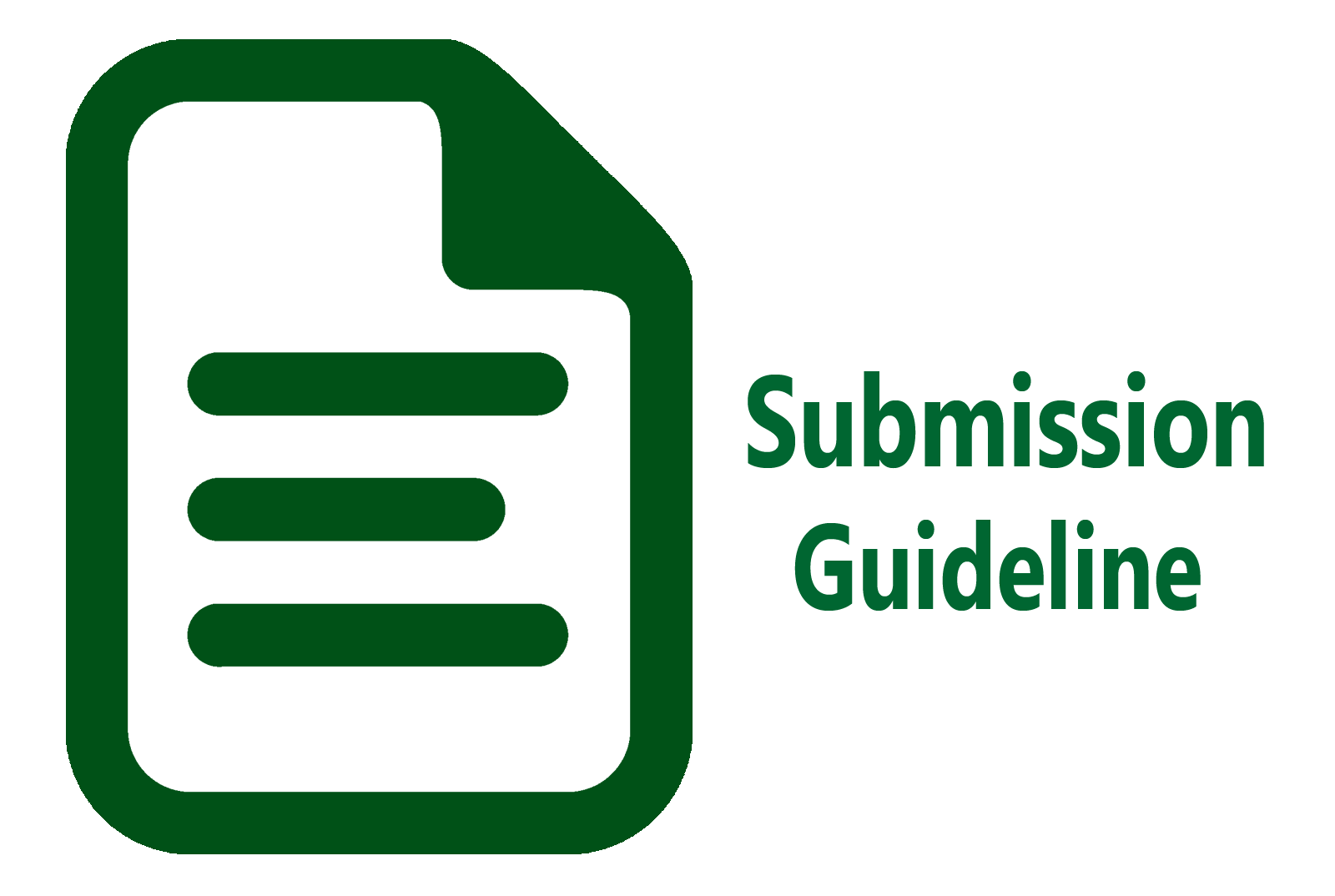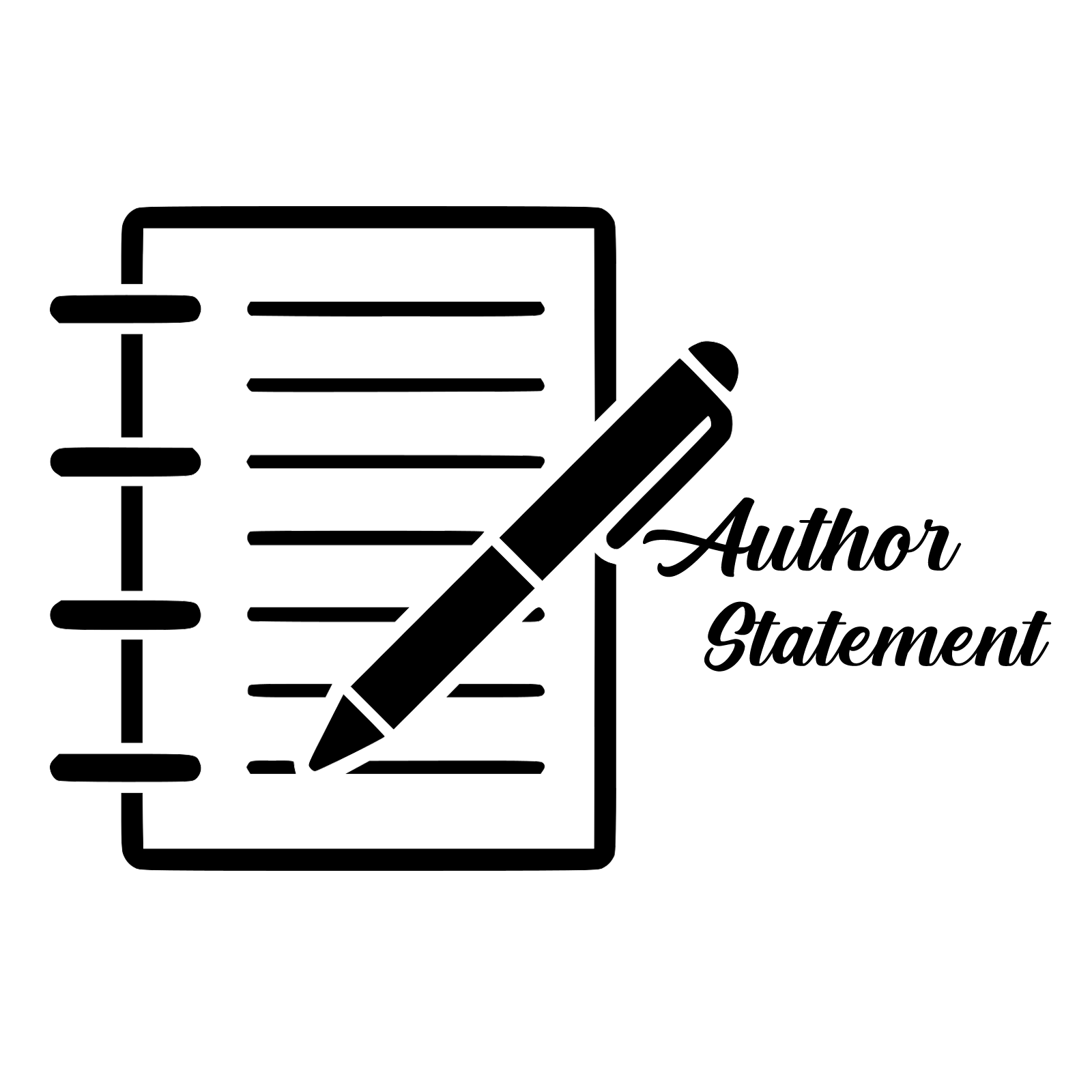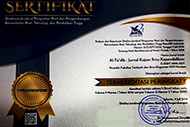Desain Tes Diagnostik Three-Tier Multiple Choice dalam Mendeteksi Miskonsepsi Hidrolisis Garam
Abstract
This study aims to determine the process of designing a three-tier multiple choice diagnostic test in detecting salt hydrolysis misconceptions and to determine students’ responses to the diagnostic test design has been developed. This research and development study involved students at one Islamic high school in Palembang and five validators. Data were gathered through validation sheets, questionnaires, interviews, and tests. The results showed that the three-tier multiple choice diagnostic test design on the developed salt hydrolysis material was declared valid and meeting the criteria for good items. The students responded positively to the design of the diagnostic test. Applications to larger data sources can be carried out further by adjusting the time in solving problems.
Keywords: Chemistry; misconception; salt hydrolysis; three-tier multiple choice diagnostic testFull Text:
PDFReferences
Aiken, L. R. (1985). Three coefficients for analyzing the reliability and validity of ratings. Educational and Psychological Measurement, 45(1), 131-142. DOI: 10.1177/0013164485451012
Aisy, Z. (2018). Pengembangan instrumen tes diagnostik pilihan ganda tiga tingkat untuk mengungkap miskonsepsi peserta didik kelas X materi redoks. Skripsi tidak dipublikasi. Semarang: UIN Walisongo.
Anwarudin, A., Nuswowati, M., & Widiarti, N. (2019). Analisis miskonsepsi peserta didik pada materi hidrolisis garam melalui tes diagnostik. Chemistry in Education, 8(1), 26-32.
Ardiansah, Masykuri, M., & Rahardjo, S. B. (2017). Kelayakan instrumen diagnostik pada materi asam-basa dan kesetimbangan kelarutan. Prosiding SNPS (Seminar Nasional Pendidikan Sains), 21, 104–111.
Arikunto, S. (2007). Prosedur penelitian (edisi revisi). Jakarta: Rineka Cipta.
Arikunto, S. (2010). Prosedur penelitian: Suatu pendekatan praktik. Jakarta: Rineka Cipta.
Arikunto, S. (2012). Dasar-dasar evaluasi pendidikan. Jakarta: Bumi Aksara.
Barke, H. D., Hazari, A., & Yitbarek, S. (2008). Misconceptions in chemistry: Addressing perceptions in chemical education. Berlin: Springer.
Borg, W. R., & Gall, M. D. (2003). Educational research: An introduction (7th ed.). New York: Longman.
Chiu, M. H. (2007). A national survey of student’s conceptions of chemistry in Taiwan. International Journal of Science Education, 29(4), 421–452. https://doi.org/10.1080/09500690601072964
Crippen, K. J., Schraw, G., & Brooks, D. W. (2005). Using an interactive, compensatory model of learning to improve chemistry teaching. Journal of Chemical Education, 82(4), 637.
De Jong, O., & Taber, K. S. (2013). Teaching and learning the many faces of chemistry. Dalam S. K. Abell, K. Appleton, dan D. L. Hanuscin, Handbook of research on science education (hal. 645-666). Routledge.
Demircioğlu, G., Ayas, A., & Demirciglu, H. (2005). Conceptual change achieved through a new teaching program on acids and bases. Chemistry Education Research and Practice, 6(1), 36–51.
Fariyani, Q., Rusilowati, A., & Sugianto. (2015). Pengembangan four-tier diagnostic test untuk mengungkap miskonsepsi fisika siswa SMA kelas X. Journal of Innovative Science Education, 4(2), 41–49.
Hammer, D. (1996). Misconception or p-prims: How may alternative perspective of cognitive structure influence intsructional perceptions and intensions? The Journal of the Learning Science, 5(2), 97–127.
Hasan, S., D., Bagayoko, & Kelley, E. L. (1999). Misconception and the certainty of response index (CRI). Physics Education, 34(5), 294–299.
Johnstone, A. H. (2006). Chemical education research in Glasgow in perspective. Chemistry Educational Research and Practice, 7(2), 49–63.
Laksono, P. J. (2019). Pengembangan dan penggunaan instrumen two-tier multiple choice pada materi termokimia untuk mengukur kemampuan berpikir kritis. Orbital: Jurnal Pendidikan Kimia, 2(2), 80–92. DOI: 10.19109/ojpk.v2i2.2646
Laksono, P. J. (2020). Pengembangan three-tier multiple choice test pada materi kesetimbangan kimia mata kuliah kimia dasar lanjut. Orbital: Jurnal Pendidikan Kimia, 4(1), 44–63.
Moyo, C. (2018). Investigating the areas of student difficulty in chemistry curriculum: A case study in Qatar. Texila International Journal of Academic Research, 5(2), 1-8.
Nurpertiwi, T. (2014). Pengembangan instrumen tes diagnostik two-tier multiple choice untuk mendeteksi miskonsepsi siswa SMA pada materi hidrolisis garam. Skripsi tidak dipublikasi. Bandung: Universitas Pendidikan Indonesia.
Peşman, H., & Eryilmaz, A. (2010). Development of a three-tier test to assess misconceptions about simple electric circuits. Journal of Educational Research, 103(3), 208–222. https://doi.org/10.1080/00220670903383002
Pinarbasi, T. (2007). Turkish undergraduate students’ misconceptions on acids and bases. Journal of Baltic Science Education, 6(1), 23–34.
Sabekti, A. W. (2015). Miskonsepsi siswa dalam bidang studi kimia: Faktor penyebab dan solusinya. Jurnal Zarah, 3(1), 44–50.
Shidiq, A. S., Van Hayus, E. S., & Masykuri, M. (2014). Pengembangan instrumen penilaian two-tier multiple choice untuk mengukur keterampilan berpikir tingkat tinggi (higher order thinking skills) pada materi kelarutan dan hasil kali kelarutan untuk siswa SMA/MA kelas XI. Jurnal Pendidikan Kimia, 3(4), 83–92.
Sirhan, G. (2007). Learning difficulties in chemistry: An overview. Journal of Turkish Science Education, 4(3), 1–20.
Sudjana, N. (2009). Penilaian hasil proses belajar mengajar. Bandung: Remaja Rosdakarya.
Taber, K. S. (2001). Building the structural concepts of chemistry: Some considerations from educational research. Chemistry Education Research and Practice, 2(2), 123-158.
Treagust, D. F. (1988). Development and use of diagnostic tests to evaluate students’ misconceptions in science. International Journal of Science Education, 10(2), 159-169.
Treagust, D. F. (1995). Diagnostic assessment of students' science knowledge. Dalam S. M. Glynn dan R. Duit, Learning science in the schools (hal. 339-358). Routledge.
Üce, M., & Ceyhan, İ. (2019). Misconception in chemistry education and practices to eliminate them: Literature analysis. Journal of Education and Training Studies, 7(3), 202-208.
Ula, E. M. (2018). Analisis kesulitan belajar kimia peserta didik dalam memahami materi larutan penyangga dengan menggunakan three-tier multiple choice diagnostic test di kelas XI IPA MA Ali Maksum. Skripsi tidak dipublikasi. Yogyakarta: UIN Sunan Kalijaga.
DOI: http://dx.doi.org/10.31332/atdbwv14i2.3013
Refbacks
- There are currently no refbacks.
Copyright (c) 2021 pandu jati laksono

This work is licensed under a Creative Commons Attribution-NonCommercial-ShareAlike 4.0 International License.
| Indexing: |











